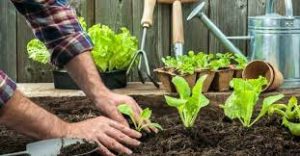
Gardening is a great way to get back to nature and enjoy some time in the fresh air. It’s also an excellent way to save money, as you can grow delicious vegetables right in your own backyard. However, gardening isn’t always easy. If you want to grow your own vegetables successfully, there are a few tips and tricks that will help you along the way. Here are some of our top tips for home gardeners who want to start growing their own veggies.
Choose the Right Location
The first step when it comes to gardening is finding the perfect spot for your vegetable patch or raised bed garden. The location should be sunny with at least six hours of direct sunlight each day, and it should have good drainage so that water doesn’t pool around your plants after heavy rainfall or watering. You should also pick a spot away from trees or large shrubs so that they don’t shade out your veggies from getting enough sun during peak hours of day light . Additionally, if you live in an area where deer or other animals might be a problem, it’s best to choose an area surrounded by fencing or other barriers like tall hedges which can help keep them away from your precious plants!
Prepare Your Soil
Once you have chosen the perfect location for your garden, it’s time to prepare the soil before planting anything else. Garden soil needs healthy nutrients such as nitrogen and phosphorus in order for plants to thrive; if these nutrients aren’t present in sufficient quantities then even well-cared-for plants may struggle and produce less than optimal yields over time . To ensure healthy soil conditions , add compost , manure , rotted leaves , straw or hay bales into the topsoil at least two weeks before planting . This will give these materials ample time break down into more usable forms which can feed beneficial microbes living within soil structure – helping create an ecosystem capable of sustaining plant life long term! Additionally adding organic matter such as mulch around base of plants helps retain moisture & prevents weed growth while improving overall plant health .
Plant at Right Time
Timing is key when it comes to successful vegetable gardening – if you don’t know what season certain vegetables need planted in order thrive, then research this information before diving into any project! Many vegetables do best when planted during springtime months since this is when temperatures tend warm up faster & soils thaw out quicker than later on summer months–giving young seedlings better chances at survival rates while maturing quickly enough over course shorter growing season ahead (depending on climate zone). Conversely more heat loving crops like tomatoes typically fare better being planted after last frost date has passed & temperatures remain consistently warm throughout duration entire summer season (again depending on climate zone).
Mulch Your Plants
Mulching is one of those things that many home gardeners overlook but can make all difference between thriving veggie patch failing one! By putting down layer organic material such as straw hay bale pieces over surface ground surrounding each plant helps protect roots from extreme temperature fluctuations while preventing rapid evaporation water loss due its insulating properties–essentially creating mini microclimate environment conducive towards growth success! An Event Management Mobile Apps developer and avid gardener told me that additionally mulches often contain small amounts beneficial ingredients like nitrogen phosphorus which slowly break down over time providing nourishment crops without having resort extra fertilizer applications every few weeks throughout entire growing cycle!.
Water Regularly
Watering regularly during hot summer days critical part keeping veggie patch happy healthy – especially with newly transplanted seedlings whose root systems haven’t fully developed yet need plenty moisture establish themselves properly ground level without drying out too quickly causing irreversible damage death altogether! Depending size container/garden bed being used determine how often should water – smaller containers dry up faster larger ones thus requiring frequent rehydration whereas bigger beds retain moisture longer intervals making them ideal candidates occasional deep soakings only instead daily spritzings upon arrival warmer weather seasons come around again!.
Harvest Appropriately
When harvesting vegetables important remember not only pick ripe fruits/vegetables but also remove any signs disease–such discoloration spots holes etc.–as soon possible prevent spread further infection amongst other nearby crops within same space too late notice until whole batch ruined beyond repair unfortunately!. Also take care not pull off too much fruit one go lest leave behind empty stalks unable regenerate new yield anytime soon afterwards leaving wasted opportunity behind instead potentially enjoying multiple harvests year round depending variety crop being grown course!. Lastly never forget trim away dead leaves & stems periodically maintain tidy appearance neatness overall look feel within enclosed space order ensure everyone remains happy 🙂

